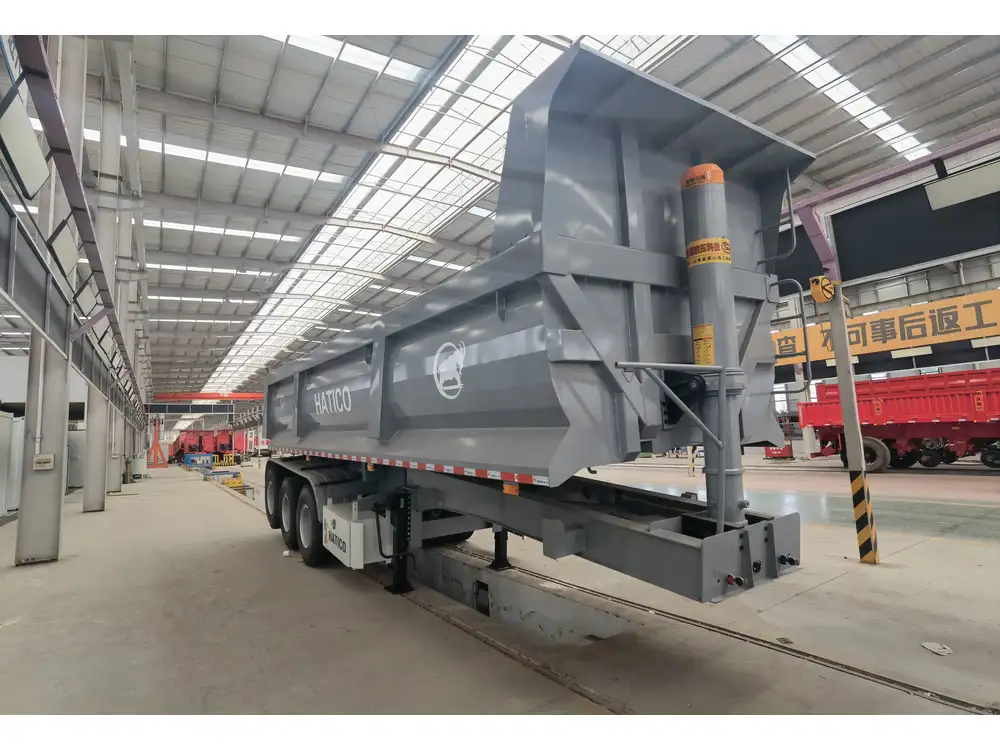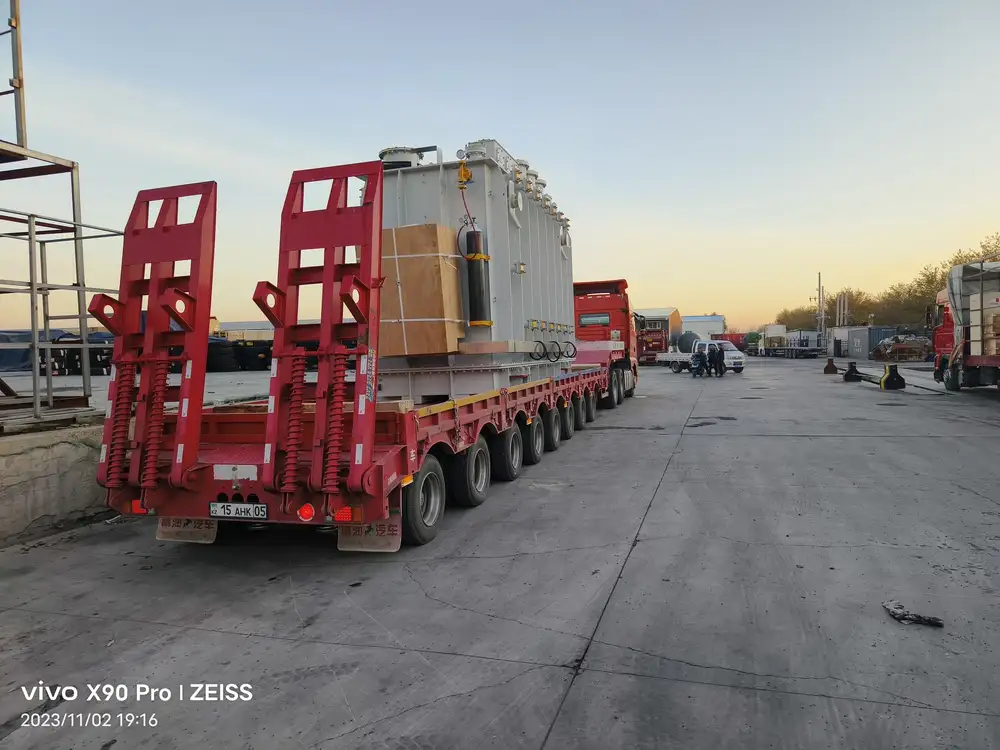Transporting freight safely and securely is paramount in logistics, particularly when it comes to using flatbed trailers. In this comprehensive guide, we explore the best practices for tarping your flatbed trailer to ensure your cargo arrives at its destination in pristine condition.
Understanding the Importance of Tarping
Tarping is not merely a precaution—it’s an imperative practice in the trucking industry. Here are several reasons why tarping is essential:
Weather Protection: Rain, snow, and wind can compromise your cargo. A well-secured tarp safeguards against these elements, reducing the risk of damage.
Debris Prevention: Road debris can shift and cause significant dent or tear in your cargo. Tarps act as a barrier against such unwanted items.
Regulatory Compliance: Many jurisdictions have regulations about how loads must be secured and covered to ensure safety on the road.
Enhanced Cargo Security: A tarp can deter theft, providing a visual block that may discourage potential thieves.
Improved Aerodynamics: Effective tarping can contribute to more efficient fuel consumption by reducing wind resistance.
Types of Tarps and Their Uses
When aiming to tarping a flatbed trailer, the type of tarp selected can significantly impact the effectiveness of the procedure. Below are the most common types of tarps and their respective applications:
| Tarp Type | Description | Best Use Case |
|---|---|---|
| Mesh Tarps | Made from breathable materials, allowing moisture to escape. | Lumber, pallets, and items that don’t need total coverage. |
| Vinyl Tarps | Heavy-duty, waterproof, and UV resistant. | Construction materials, heavy freight. |
| Poly Tarps | Lightweight and available in various colors and sizes. | General use for lighter freight. |
| Canvas Tarps | Durable and breathable fabric ideal for long-term use. | Items sensitive to moisture e.g. machinery. |
| Customized Tarps | Tailored to specific dimensions. | Unique-sized loads that require precision. |

Step-by-Step Process of Tarping a Flatbed Trailer
Step 1: Prepare the Tarp and Trailer
Before starting, ensure the following:
Inspect Your Tarp: Look for any defects, frays, or tears. A compromised tarp will not protect your cargo effectively.
Clean the Trailer Surface: Remove any debris from the flatbed surface to ensure the tarp lays flat without obstruction.
Step 2: Position the Tarp
Unfold and Position:
Center the Tarp: With the help of a colleague, lift the tarp and drape it over the cargo in a way that keeps it centered.
Adjust for Coverage: Ensure the tarp extends over both sides of the load to provide full coverage.

Step 3: Secure the Tarp
Tensioning and Fastening:
Use Tarps with Grommets: Most tarps come with grommets (reinforced holes), which facilitate securing the tarp.
Tie-Down Straps: Utilize ratchet straps or rope to attach the tarp through the grommets. Ensure that the straps are tight enough to mitigate flapping but not so tight that they damage the tarp or cargo.
Check for Gaps: Examine the tarp’s positioning. There should be no excessive slack that could allow wind to catch under the tarp.
Step 4: Adding Additional Security
Innovative Approaches:
Use a Cargo Net: If appropriate, placing a net over the tarp adds further security, especially beneficial for loads that may shift during transit.
Consider Side Flaps: For overly high loads, side flaps can be useful. These are additional sections of tarp that drape over the sides, further reducing exposure to wind and rain.
Tips for Efficient Tarping
To ensure that the process is efficient and your cargo remains secure, consider the following tips:
Use a Tarping System: Some trailers are equipped with integrated tarping systems that streamline the covering process.
Practice Teamwork: Tarping can be cumbersome. Having one or more assistants can significantly ease the load of securing the tarp.
Regular Maintenance: Inspect and maintain your tarps. Regular cleaning and storage in a dry, shaded area will prolong their lifespan.
Practice Safety First: Be mindful of load securing regulations and always engage safety measures while climbing onto or maneuvering around the trailer.

Common Tarping Mistakes to Avoid
Tarping a flatbed trailer may seem straightforward, but some pitfalls can lead to subpar execution. Here are mistakes that should be avoided:
Overlooking Trailer Height: Ensure that the tarp can adequately cover the height of the load. An incorrectly sized tarp can lead to exposure and potential shifts during transport.
Not Using Enough Fasteners: Underestimating the need for fastening could leave significant slack. More fasteners yield better security.
Ignoring Weather Variability: Changes in weather can impact how a tarp settles. Always reassess your tarping method as conditions change.
Evaluating Tarp Supply Options
When considering the best tarps for your operations, a systematic evaluation of suppliers and materials may help you identify the ideal fit for your specific needs.
| Supplier | Material Type | Durability Rating | Price Range |
|---|---|---|---|
| Supplier A | Heavy-Duty Vinyl | Excellent | $$ |
| Supplier B | Polyethylene | Good | $ |
| Supplier C | Canvas | Very Good | $$$ |
| Supplier D | Mesh | Average | $ |
Note: The price range ($ = affordable; $$$ = premium) is subjective and can vary based on the supplier and location.
Conclusion: Transform Your Tarping Technique
Tarping your flatbed trailer is more than a technique; it’s an art that requires attention to detail, understanding of material types, and consistent practice. By following these detailed steps and understanding the elements involved, you can maximize protection for your freight while minimizing risks associated with transport.
Investing in quality tarps, adhering to regulation standards, and employing effective tarp securing techniques ensures your cargo remains safeguarded against the trials of the road. This proactive approach not only optimizes operational efficiency but also fortifies your reputation as a reliable transporter.
Through ongoing education and practice, we can elevate our transport practices, ensuring safer, more efficient logistics for everyone involved. Happy hauling!



